Michigan tribes race to save their language from extinction
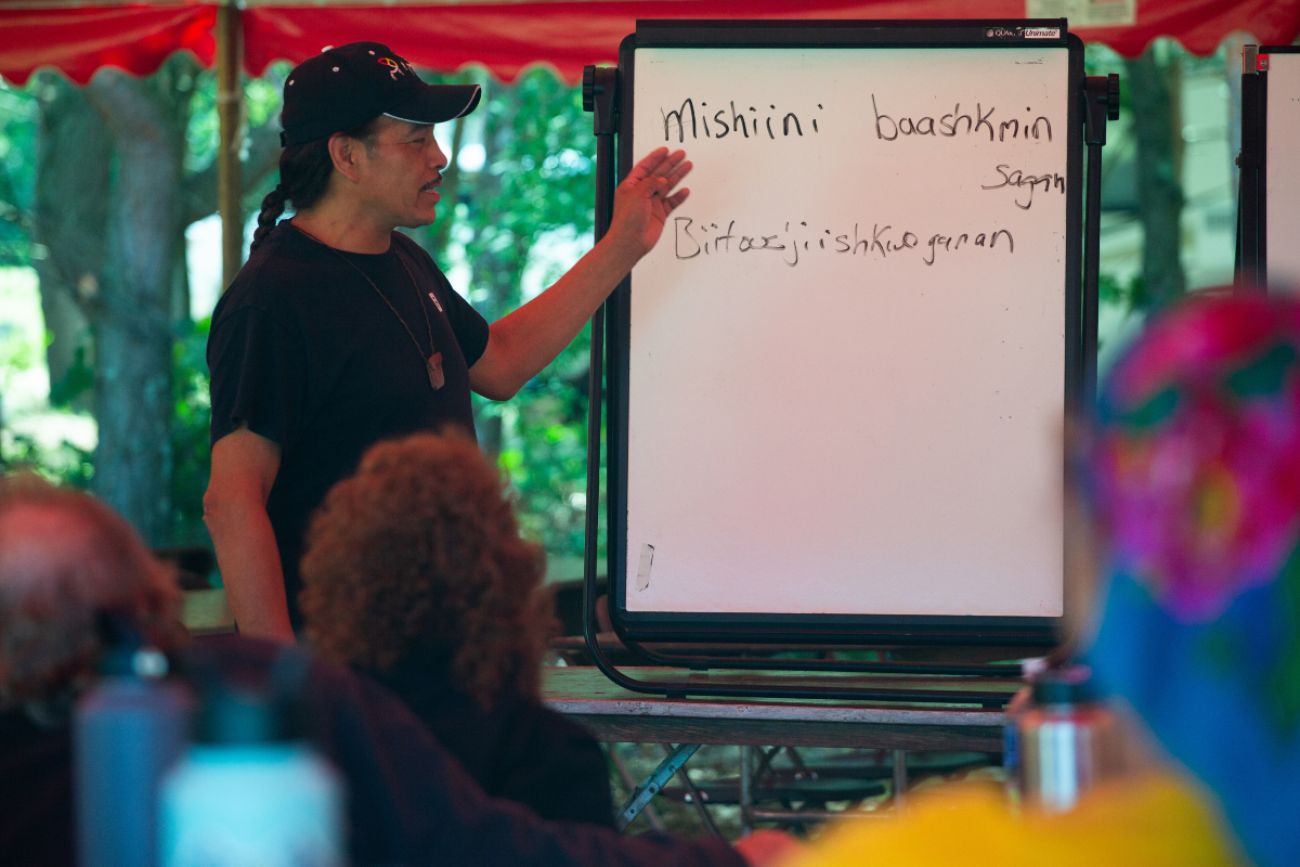
- The language of Michigan’s 12 federally recognized tribes is in danger of going extinct
- Tribal leaders believe there are only a handful of Native Americans born in Michigan for whom Anishinaabemowin is their native tongue
- Classes, books and online courses to learn the language are growing
BRIMLEY — There’s a word in the Anishinaabemowin language that doesn’t have an equivalent in English, a word that hints at the heartache and hope of Michigan’s Native Americans.
Aanikoobijigan refers to a person’s great-grandparent, their great-grandchild, and the bloodline linking them.
Roughly, it’s pronounced on-i-KOO-bi-chi-gin, one word binding seven generations.
It’s a word that would have been familiar to Brendann Hissong’s great-grandparents, who spoke their tribal language throughout their lives in their home near Sault Ste Marie. Her great-grandmother died before Hissong was born, and her great-grandfather died in 1960, when she was only 4 and too young to pay attention to his words.
Her grandparents spoke little of the language, and Hissong doesn’t recall her parents uttering a single tribal phrase when she was growing up in the Upper Peninsula.
Though she worked in cultural and traditional medicine with healers in the Sault Ste Marie Tribe of Chippewa Indians, Hissong never knew more than a handful of words of the language connected to that medicine. Now 66, the Brimley resident sits in the nearest seat to a large display screen in a classroom at Bay Mills Community College. There are snacks and drinks, but they go untouched, with the other 16 students attending by Zoom rather than in person on a warm day in early June.
By her side are a pen and a notepad, as she painstakingly begins to learn the language of her ancestors.
“This is something that’s important to me to be able to share with my grandkids,” she said. “It’s our language, and I feel like we’ve been robbed of it.”
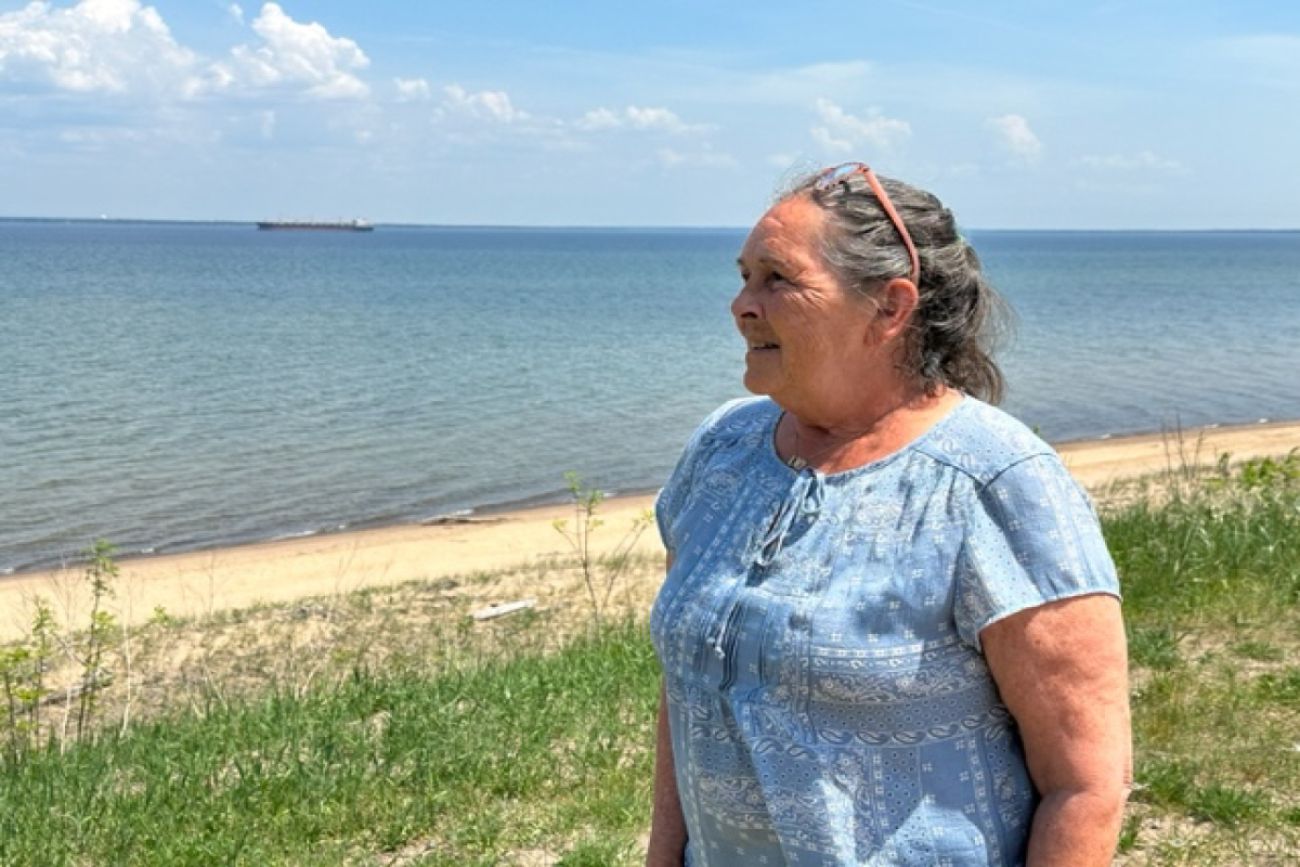
For generations, many of Michigan’s Native American children were shipped to one of five boarding schools in the northern half of the state where they weren’t allowed to speak Anishinaabemowin, the root language of what are now the 12 federally recognized tribes based in the state.
Today, Anishinaabemowin is considered an endangered language. There are pockets of native speakers in Minnesota and the Dakotas, but among Michigan’s roughly 130,000 tribal-affiliated residents, there may be no one born in Michigan still alive for whom the language is their native tongue.
The language immersion class here at this Upper Peninsula tribal community college is one of several fledgling efforts to save the language, and the culture and worldview that tribal leaders say are intertwined with words that, until the last few decades, were never written down.
It’s not going to be an easy task.
Most of Hissong’s classmates at Bay Mills are over 50. None, including the class instructor, consider themselves fully fluent. There are different dialects, pronunciations and spellings among Michigan’s 12 recognized tribes, complicating instruction.
“It’s a slow process, but it’s worth it,” said Hissong, now in her third semester in the language class. “It’s helping me find out who I am and where I’m supposed to be in the world.”
Legacy of trauma
There are about 6,700 languages spoken in the world today, with only about 100 widely taught at colleges and universities. The majority of the world’s indigenous languages are considered endangered.
Anton Treuer, professor of Ojibwe at Bemidji State University in Minnesota, told Bridge Michigan that of about 600,000 Anishinaabe-affiliated people alive today, perhaps 30,000 are native speakers, with most of them living in remote sections of Canada.
Of the native speakers in the U.S., the majority live in Minnesota, with “virtually none in Michigan,” Treuer said.
Michigan’s tribal language was nearly snuffed out by a century of federal policy that shipped many Native American children to boarding schools. Most tribal-affiliated Michigan residents have grandparents or great-grandparents who have horror stories about their time at the schools.
“There were a couple generations where they beat it (Native American language and culture) out of us,” said Martin Reinhardt, a member of the Sault Ste. Marie Tribe and a professor of Native American Studies at Northern Michigan University. Reinhardt’s mother and grandparents were in Indian boarding schools, as was his wife’s mother.
“A lot of our elders had kind of given up on teaching us (the language and culture),” Reinhardt said. “I think they just didn’t see much use for it.”
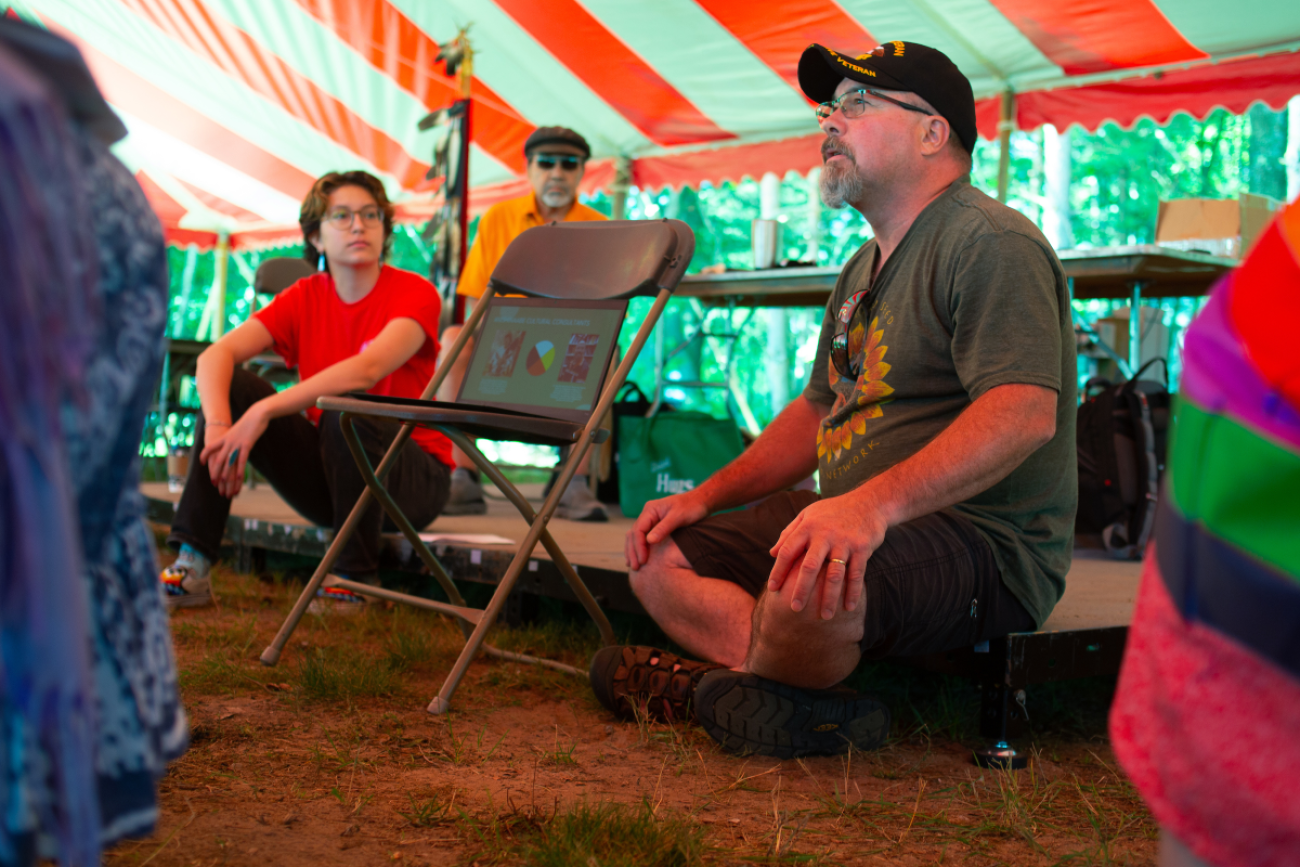
The language that survived has been muffled by the omnipresence of English, on TV, music and the workplace, said Tyler Bouschor, cultural activities coordinator for the Sault Ste. Marie Tribe of Chippewa Indians.
“I had a Western education, I graduated from Lake State (University),” Bouschor said. “They want you to speak a certain way and I can sit down and talk to a businessperson and speak perfectly fine (English) vocabulary. But when it comes to being around our (tribal) community, there are times where I don’t know what is being said” when a tribal member speaks Anishinaabemowin.
“So there’s that struggle of how society has shaped us,” Bouschor said. “We’re worried about money, places to live, food, you know, and language comes way down at the bottom of the list.”
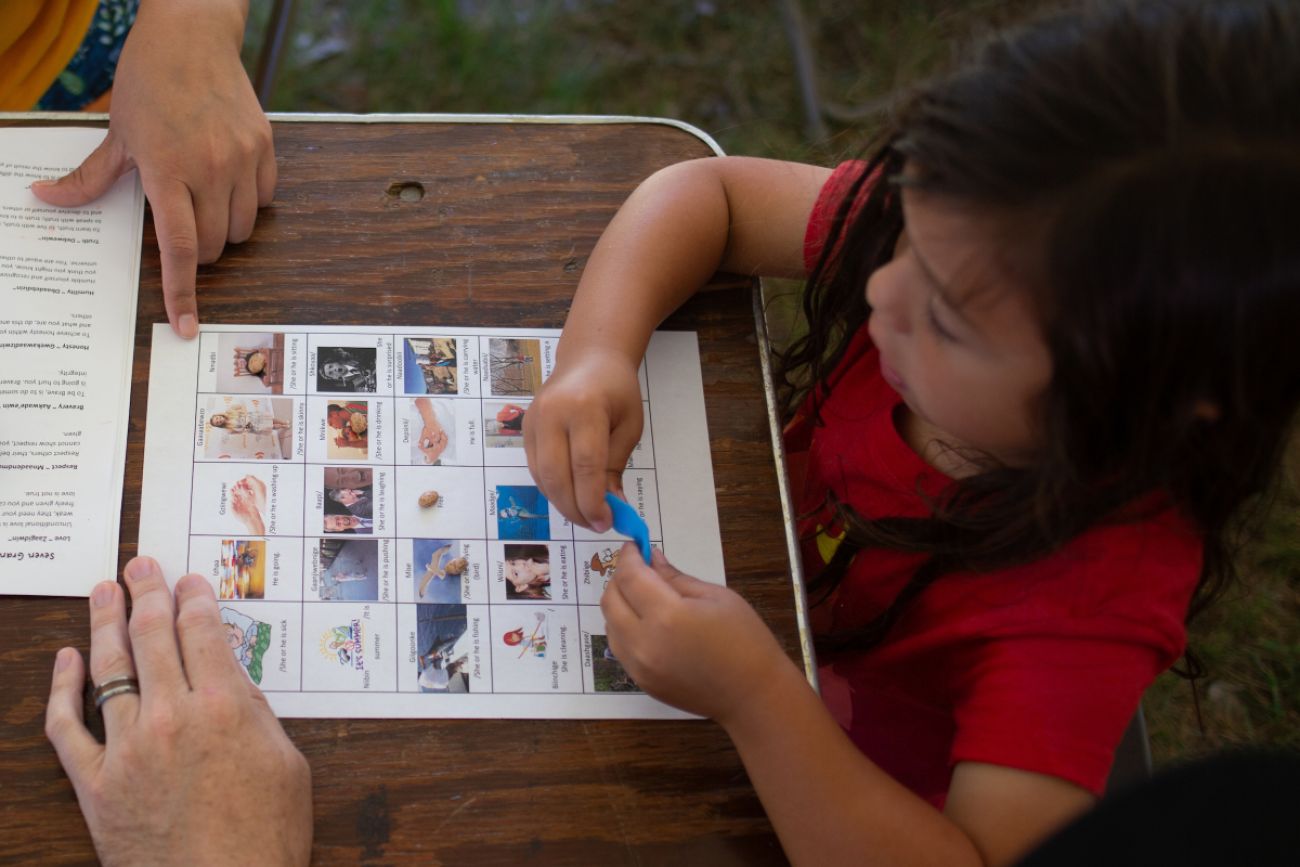
Treuer said the odds of Anishinaabemowin surviving as a language that is spoken conversationally in homes are “not great.”
“For minoritized language, which includes most indigenous languages, the barriers are profound,” Treuer said.
One barrier is the pressure of assimilation, said Veronica Grondona, an associate professor at Eastern Michigan University who studies Native American and endangered languages.
“They don’t speak their language because their parents pounded in their heads that if they speak their language, they won’t be able to get jobs,” Grondona said. “In a marginalized community, you’re considered a weirdo if you speak your language, and no one wants to be a weirdo.”
Even as tribes step up efforts to teach Anishinaabemowin, tribal leaders acknowledge that a majority of members don’t consider learning the language to be a high priority. In visits to three tribal-operated casinos in Michigan, a Bridge reporter didn’t find any tribal employees who spoke Anishinaabemowin beyond simple words or phrases like boozhoo (welcome) and miigwech (thank you).
“We’re at a bottleneck time. We’re going to be losing whole bodies of human thought and ways of knowing” as languages go extinct, Treuer said. “Some might frame it as just one pretty bird disappearing in the forest, it’s more than that. Different languages offer different ways to solve problems.”
Added Grondona, “language is what makes you part of a community. That’s especially true with indigenous people.
“When their language goes, their sense of identity goes as well.”
Language as balm
There’s a distinct sound T.C. can hear in his head, one that his ancestors knew. It’s the sound made in the winter in the woods around his home in Watersmeet, in the western Upper Peninsula, as the wind rustles the crisp leaves of a tree that has refused to let them go.
“There’s a word for that,” said T.C., coordinator of cultural and language revitalization for the Lac Vieux Desert Band of Lake Superior Chippewa Indians, who asked that his last name not be used.
The word is pronounced “sissi-gwad.”
“That’s what it (the rustling leaves) sounds like,” he said. “That sound reminds you of summertime in the middle of a polar vortex and gives you a warm feeling inside.”
Related:
Michigan is set to better track Native American student achievement
How a tiny U.P. school became a national model for Native American education
The meaning of the word reverberates beyond a winter walk in the woods for Michigan’s Native Americans. It’s about remembrance of better times, and hope for the future.
“When Native people got put in the schools and forced to learn English, when older people came home, they stopped doing cultural things,” T.C. said. Losing their culture made “Native American people feel so fucking bad all the time.
“Bringing the language back does bring back positive feelings.”
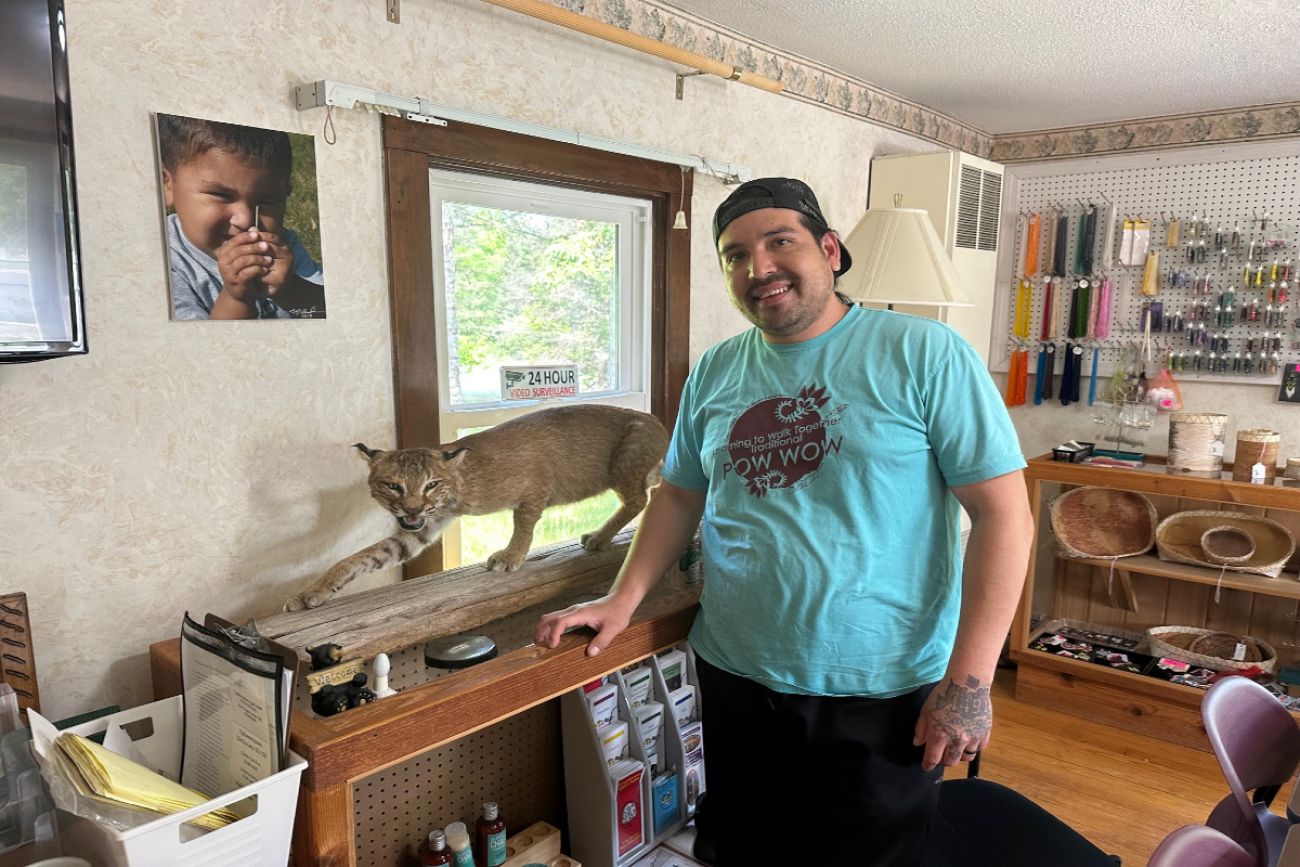
T.C. leads a program that introduces tribal-affiliated children and teens to Anishinaabemowin language and traditional practices, such as tapping for maple syrup. It’s a program funded through the federal government to help preserve Native American history and culture.
While the program is appreciated, T.C. isn’t ready to praise the U.S. government.
“They destroyed our culture completely by design,” he said. “You have a group of people that come in and they speak this other language, and in order to conduct business with them or with anybody else, you need to speak English, if not, you're savage and we don't want to deal with you. So now fast forward to 2023 and now we're going to throw you guys some money so you can start trying to help revitalize your language?”
“Reclaim who I am”
In late July, about 200 people gathered at a campground across the street from the Little River Casino in Manistee. Under one tent, children turned the pages of bilingual storybooks and learned the names that ancestors used for woodland animals. In another, adults took turns shouting Anishinaabemowin words for the action taking place in photos — eating, drinking, running, sitting.
Across a patch of grass where loudspeakers blared “I Walk the Line” with the lyrics in Anishinaabemowin, another group played bingo, with the numbers replaced with verbs spoken across the rivers and forests of Michigan hundreds of years ago.
It was the 28th annual Anishinaabe Language and Culture Camp, hosted by the Little River Band of Ottawa Indians. It was the first language camp attended by Crystal Micko Schmalz. The 38-year-old hospital chaplain from Newaygo in western Michigan sat at a picnic table with her husband and their daughter, Norah, planning which language sessions they’d attend.
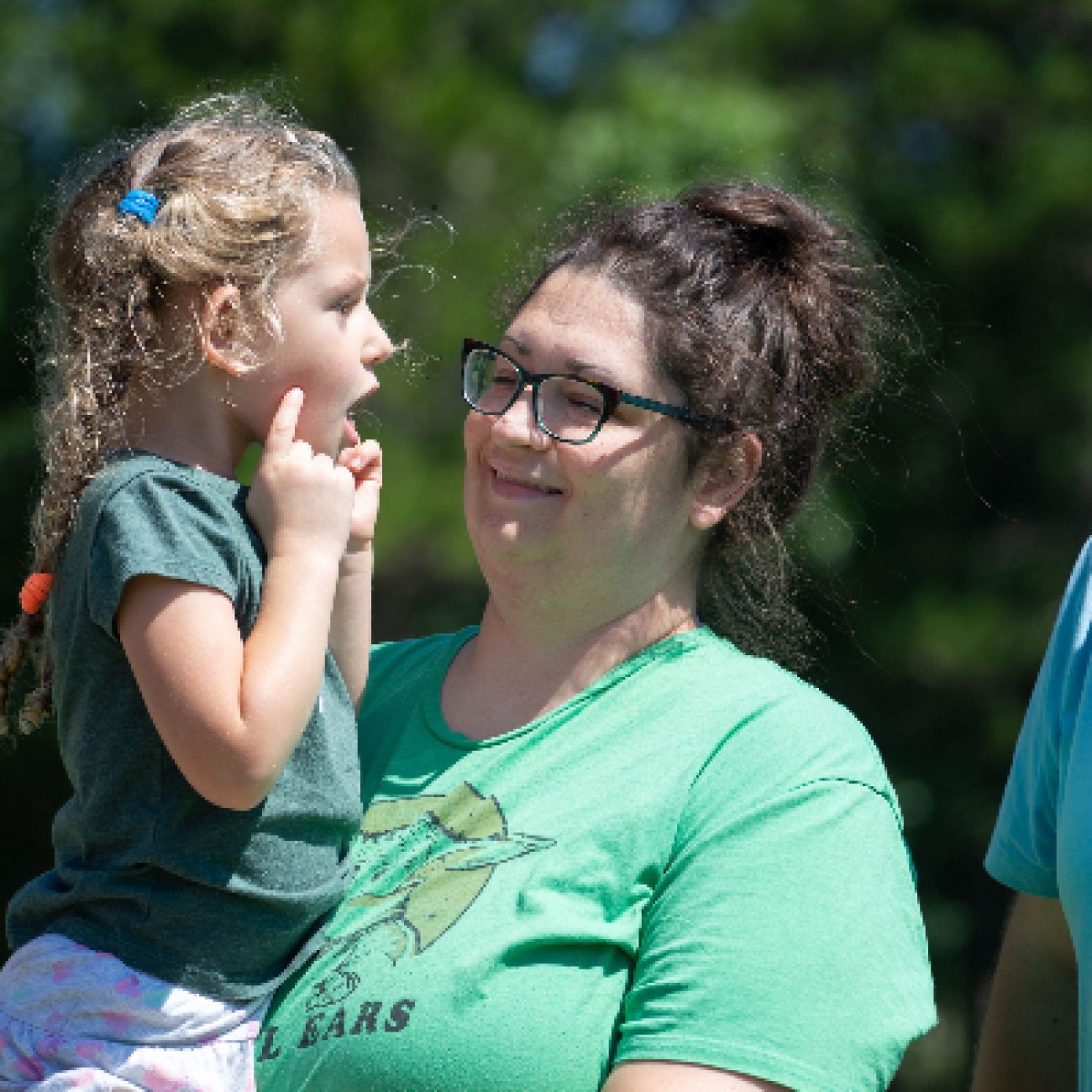
“Getting older and thinking about my own mortality and having my own child, makes me wonder what I can pass on someday to my own daughter,” she said. Coming to the camp was “a way to heal, and reclaim who I am.”
Her family’s story is familiar. Her grandfather, a member of the Little River Band, had been shipped to a boarding school when he was not much older than 4-year-old Norah, where he and his fellow tribal members weren’t allowed to speak their native tongue. Her grandfather didn’t speak about his experiences there — Schmalz doesn’t recall him even saying which boarding school he attended — and he almost never spoke the language as an adult.
Schmalz’s father would sprinkle a few Anishinaabemowin phrases into conversations at home when she was young — salt and pepper was always “ziitaagan and waasgang” — but when her parents divorced, even that small exposure to Schmalz’s ancestral language slipped away.
For Schmalz and others at the camp, reconnecting with the language of their ancestors serves as a balm for the struggles Native Americans have faced in recent generations. Schmalz’s family has struggled with alcoholism, including relatives whose drinking led to early death. About one in seven Native American and Alaska Native adults suffer from alcoholism, according to a National Survey on Drug Use survey in 2013. In a 2017 Inter-Tribal Council of Michigan report, about a quarter of Michigan Native American adults acknowledged binge drinking, compared to 18 percent of Michigan adults overall.
As of 2020, 31 percent of Native Americans in the state lived in poverty, compared to 17 percent of the state overall, according to Michigan Department of Health and Human Services report. Native Americans in Michigan have higher rates of heart disease (22 percent of adults, compared to 10 percent), diabetes (19 percent, compared to 12 percent), depression (30 percent, to 21 percent) and disabilities (45 percent, compared to 28 percent) than the state as a whole.
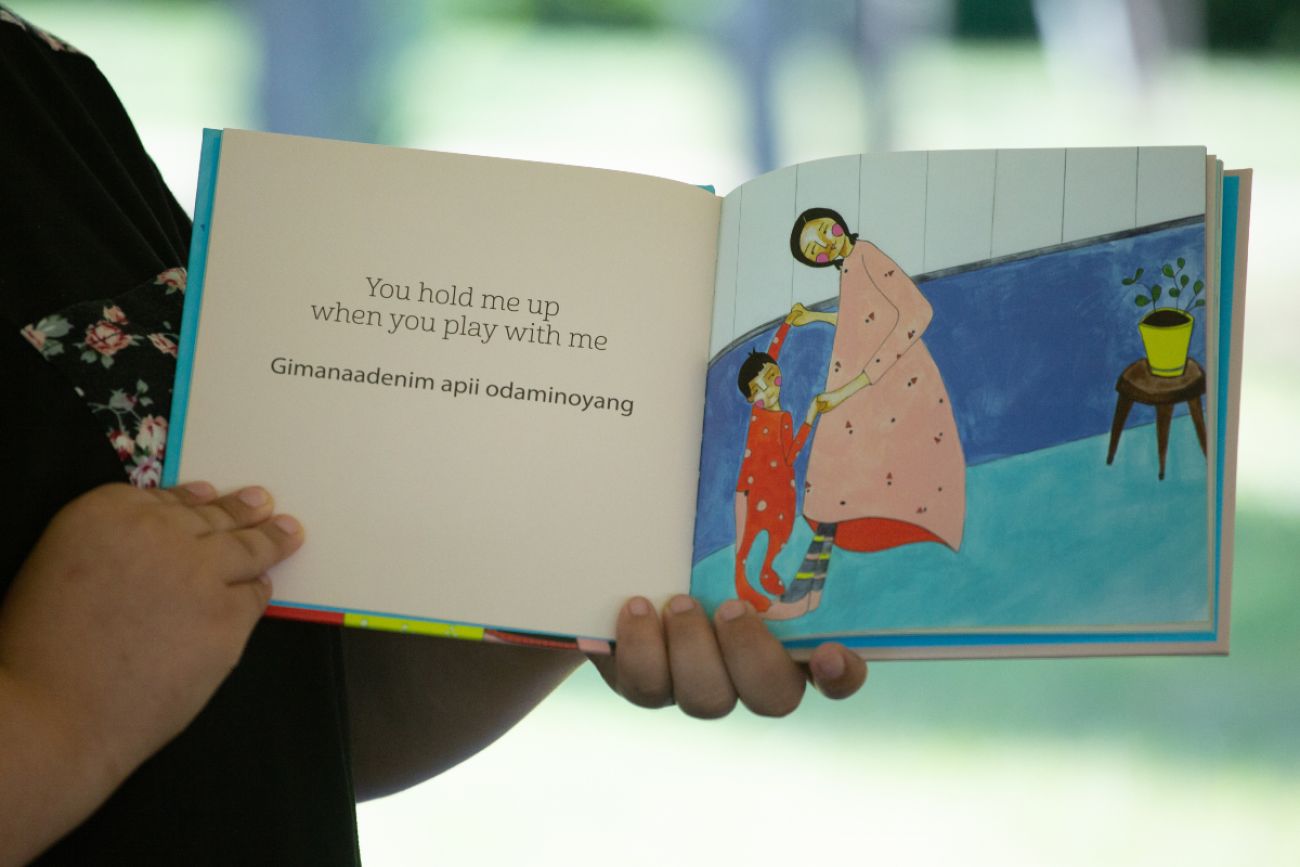
“There’s a pain that’s in our being, in the fragments of our DNA,” Schmalz said. “I don’t want the pain from before to haunt me. I want my ancestors to be with me, not the ghosts that haunt our tribal members.
“Relearning the language is part of that journey,” she said. “It feels like it’s the soul and spirit of the people.”
Tribal members from many of Michian’s recognized tribes and from as far away as Oklahoma attended the weekend camp. Some knew very few words, a few were fluent.
The camp is run by Kenny Pheasant, who grew up on Manitoulin Island, on the Canadian side of Lake Huron, in one of the largest Native American communities that continue to speak Anishinaabemowin in their homes. He didn’t learn English until he went to high school.
Pheasant now lives in Manistee. And though he leads language classes, posts videos and coordinates the state’s largest language camp each summer, the 68-year-old worries about what could be lost beyond words if Anishinaabemowin goes extinct.
“If we look at language as a mirror, you see an image of yourself. It shows the culture in full color,” Pheasant said.
“Some of my people are content with just dressing up in their regalia and going to their powwow and singing and dancing and that’s it,” Pheasant said. “That’s good enough for them, I guess. But they haven’t seen the mirror.”
Aaron Dokum asked a group at the language camp if anyone knew how to say apple pie in Anishinaabemowin. No one raised their hand, so Dokum began writing on a whiteboard.
Mishiini baashkmin sagan biitoosjiishkooganan.
Trick question. There’s no word for pie in the tribal language. The best that can be done is to describe what a pie is — a crust with a filling made of apple.
Dokum grew up in Canada speaking Anishinaabemowin, and is one of only a handful of current Michigan residents for whom the language is their native tongue. He uses the apple pie example often when he speaks to groups, as an example of the challenges of breathing life into a language that stopped developing new words more than a century ago.
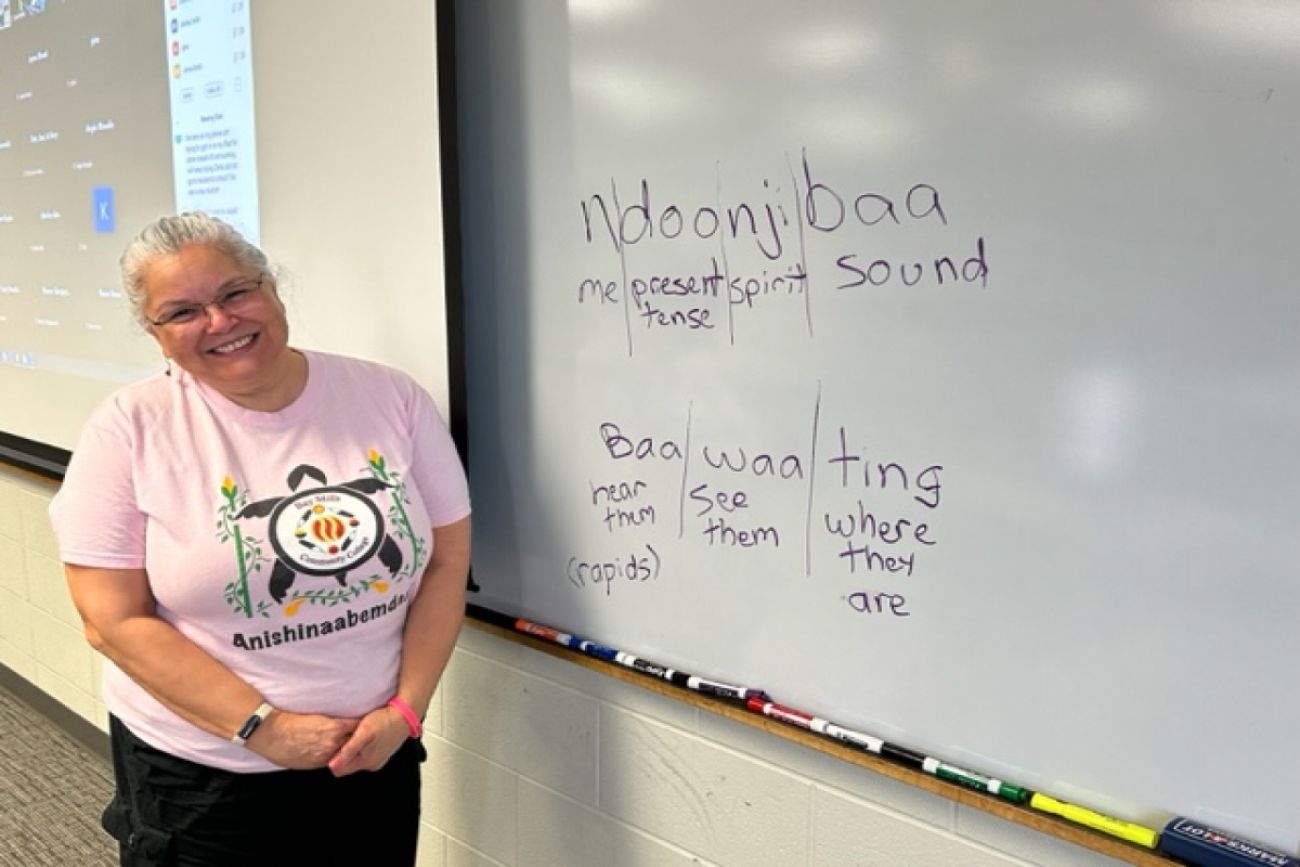
Another example: Phone is giigidoo-biiwaabikoonsan; which has an English translation of “being able to speak from one spot to a different one.”
Adding to the frustrations of learning the language is that it was strictly a spoken language, with no written alphabet. That has left a generation trying to save the language to debate a single, phonetic spelling of words so Anishinaabemowin can be shared widely. Different tribes have different dialects, leading to disagreements over pronunciations.
Those learning the language from scratch must deal with a language quite different from English, based on verbs rather than nouns and sentence structure that vary depending on whether a word is considered animate or inanimate. Blueberries are inanimate in Anishinaabemowin, but raspberries are animate; water is inanimate, but snow is animate.
Cecil Pavlat, a member of the Sault Ste. Marie Tribe of Chippewa Indians, said there are no fluent speakers left among its 45,000 members and young tribal members are, in general, apathetic about the language and culture.
“We're not unlike any other ethnic group where the youth are so bombarded with social media, phones, all these things, and so they don't have any interest in learning the language,” Pavlat said. “I don’t know if it’s ‘if’ or ‘when’ our language goes extinct.”
A language foothold
Others are more optimistic. Treuer, the Bemidgi professor, gave the example of the Hawaiian language, which was once down to about 1,000 native speakers but has bounced back to 24,000, with the language taught from preschool through college on the islands.
On the Lac Courte Oreilles Reservation in Wisconsin, the Waadookodaading Ojibwe Language Institute has built a program that is increasing the number of fluent Anishinaabemowin speakers by concentrating efforts on young children. “There are Native children who run around a parking lot hollering at each other in their tribal language,” Treuer said.
Rosetta Stone, the foreign language learning program, is building an Ojibwe (a dialect of Anishinaabemowin) course. There are two years of language instruction available now, with four more still in development.
The Little Traverse Bay Band of Odawa Indians, based in Harbor Springs, is creating an online language curriculum that can be used by schools or families. There are children’s books in English and Anishinaabemowin available on Amazon, along with a growing number of books that record tribal stories that were passed from generation to generation by mouth.
Michigan’s tribes have their own language and culture revitalization programs, including the language immersion class at Bay Mills Community College.
The instructor, Michele Wellman-Teeple, sang a song at the language camp in Anishinaabemowin.
Together we could be strong
The seventh fire they have lit
We have to speak Anishinaabe language
We are living well
“It’s going to be really tough to establish a foothold of language learners,” Wellman-Teeple said. “We started 20 years ago. A lot of (the first students) were older and wanted to sort of reclaim or recapture the language because maybe they grew up in a household hearing their elder generation speaking to each other,” Wellman-Teeple said. “Unfortunately, a lot of the elders who were in the classes have since passed on.”
Wellman-Teeple’s husband, Bucko Teeple, worries that not enough people are committed to language preservation to succeed.
“We're not doing enough at the community level to support the language teachers out there,” Teeple said. “I don’t think it’s that much of a priority yet. We need to keep working on that.”
Bemidgi’s Treuer said the key to keeping Michigan’s tribal language and culture alive may depend on whether enough people embrace Aanikoobijigan, the word that refers to leading a life with the past and future generations in mind.
Not retaining the language today means future generations won’t have the option of learning it
“The colonial way of thinking is to think of individualism and the next quarter financial statement,” Treuer said. “We should be thinking generations ahead, when nobody remembers our name and it doesn’t matter how many books we’ve written.”
Schmalz is doing her part. At the end of the Manistee language camp, as she and her family drove home to Newaygo, 4-year-old Norah kept repeating a word, trying to get it right.
“She was trying to say Anishinaabemowin,” Schmalz said.
Learning the language “is a way for me to reconnect with myself, and reconnect with everyone who is part of me who came before me,” Schmalz said. “When I listen, I can hear my ancestors in the trees. I don’t know if we stop long enough to listen.”
See what new members are saying about why they donated to Bridge Michigan:
- “In order for this information to be accurate and unbiased it must be underwritten by its readers, not by special interests.” - Larry S.
- “Not many other media sources report on the topics Bridge does.” - Susan B.
- “Your journalism is outstanding and rare these days.” - Mark S.
If you want to ensure the future of nonpartisan, nonprofit Michigan journalism, please become a member today. You, too, will be asked why you donated and maybe we'll feature your quote next time!




